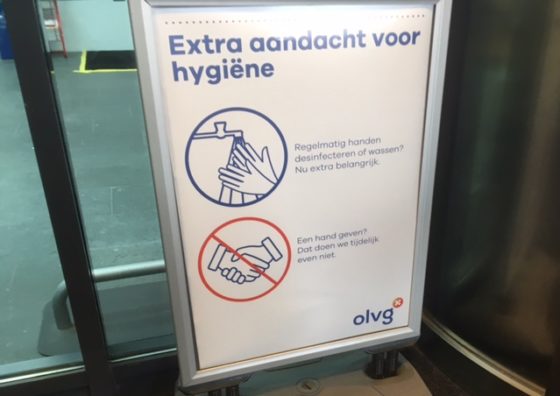September corona rules ‘did nothing’ says Van Dissel as cases rise again


The government’s limited coronavirus restrictions in September, such as closing bars at 10pm, did nothing to check the rise in infections, disease control specialist Jaap van Dissel has told a parliamentary briefing.
The measures, announced by health minister Hugo de Jonge on September 28, also included limiting the number of visitors at home to three and a maximum of 40 people at outdoor gatherings.
In the following two weeks the number of cases reported per day more than doubled from 3,000 to nearly 7,000. The rapid rise was only curtailed by the partial lockdown introduced on October 13, Van Dissel, the public health agency RIVM’s head of infectious disease control, said at the weekly technical briefing on Wednesday.
Latest figures show coronavirus infections declining in all age groups, Van Dissel, said, while both the number of tests being taken and the proportion returning positive results are also falling.
Extra measures
The extra lockdown measures brought in on November 4, which are being lifted on Wednesday evening, had accelerated the decline by around 10%. In regions with high levels of infection such as Rotterdam and Twente the effect has been even more pronounced, Van Dissel said.
However, he warned that relaxing the lockdown rules too far over Christmas risked triggering a new rise in infections. Van Dissel pointed to Canada, which experienced a sharp increase following the Thanksgiving celebrations on October 12, as a cautionary tale.
‘It shows that there are risks when people come together,’ said Van Dissel. ‘If you want to make sure the risk is as small as possible, you need to observe some kind of quarantine before you go away. But the chance can never be zero.’
Rise in cases
The latest daily cases showed infections increased for the first time in four days, although the figures are incomplete because of technical issues.
The RIVM reported 4,628 new positive tests, more than 300 higher than Tuesday’s figure, but the true figure is estimated to be around 1,000 higher.
The secure network used to send data from the local health services crashed on Tuesday afternoon and the error could not be rectified in time. The missing cases will be added in the next few days.
The number of patients in hospital fell by 59 to 2,087, of whom 559 are being treated in intensive care – 17 fewer than on Tuesday.
Ernst Kuipers, head of the national acute care association, said regular healthcare was still being disrupted by the high number of Covid patients, despite the downward trend. The high rate of infection in the elderly population has meant that two in five patients need intensive care treatment, compared to one in five during the first wave in the spring.
‘The change in hospitals is going very slowly. Every bed that comes free is immediately being used for a non-Covid patient,’ Kuipers said.
Thank you for donating to DutchNews.nl.
We could not provide the Dutch News service, and keep it free of charge, without the generous support of our readers. Your donations allow us to report on issues you tell us matter, and provide you with a summary of the most important Dutch news each day.
Make a donation